I remember how Thamel used to be in the late 60s and early 70s. The first ever school that I attended was the venerable Juddhodaya Public High School. Popularly, and affectionately, known as JP, it was a public school in the afternoon but was a private English school in the morning. The English school was run by a very strict but highly effective principal whose first name I do not remember very well. I do remember he was a Gurung man. His wife was very active too and their two sons were also enrolled at the same school. I started in Grade 5 (I was eight years old at that time) – the year must have been 1970. There were three different routes to the school, a short route via Thamel (past the Kathmandu Guest House), a longer route via Chetrapati, and another longer route via Sorahkhutte. The route we would select would depend on my friends who would be walking with me to the school; mind you, I was the youngest in class. We had to be inside the school compound by 6 am in the morning, too early for an eight year old, however, I was already used to waking up early in the morning (five to be exact). So, I would (or it was rather my grandmother) pack my bags and walk toward the school, a few boys would be either waiting for me down the street or would catch up in case they were late. One of my classmates, Chandra Gurung (I affectionately called him Chandre), was slightly older than me, perhaps by two years. He lived in a rented apartment in Sorahkhutte, so I used to call him up from the street. We then would walk to the school together via Thamel. Sometimes, he would come early, call me up in my house, and then we would go to school via Chetrapati. The shorter route to the school was via Saat Ghumti (street with seven corners), which was behind KGH, but unless we were really late we would never go that way. The main reason was that Saat Ghumti always seemed narrow (it was not on the main street) and dark (no pole lights), and our elders would advise us little children to take a safer route instead. We used to take that route occasionally, usually when we were going to be late to school. We would rather take the risk of walking the dark street than being late to school, in case of which we were certain to receive some form of punishment. So, we would run past Saat Ghumti (occasionally looking behind if someone was following), walk briskly past the (east) entrance to KGH, and then slow down a bit to come to our senses, celebrate our victory of overcoming fear, and then calmly walk past the school entrance.
Today when I think about those days, especially the dreaded walk past Saat Ghumti and the fear of being chased by some hooligans or an imaginary ghost (we had heard plenty of ghost stories), I am forced to laugh at myself and my foolish friends. What a chicken we had been! But would you really blame an eight year old for being a chicken, you won’t, right? Anyway, the point is Thamel of the past was not what it has become today, a real world for the tourists, a fantasy land for the locals, with all its neon lights, foreigners and foreign food, departmental stores, clubs, and what not. More on this will come later. For now, let’s stay focused on land use change in and around Thamel. Two popular hotels – Manang at the northern edge of Thamel (toward Sorahkhutte Pati) and Marsyangdi, a few blocks north of KGH – were built by entrepreneurs from Manang (a hill district in the shadow of the Great Himalaya in central Nepal). They purchased the vacant land from people I knew. By the way, Sorahkhutte means sixteen legged, and pati means a shelter (more like a pavilion). There is an interesting story of such patis in the Valley. The patis were the inns of yesteryears . The Z Street, which today connects Thamel with Paknajole, used to be the vegetable garden where we stomped. A big white-washed residence in Thamel, which belonged to a Thakali family who had extensive properties around the country including in Chitwan, is now gone. Today, it is replaced by a collection of buildings outfitted with restaurants, retail shops, bank, travel and trekking agency, cargo agent, etc. A big compound northeast from Thakali’s residence has now a hotel in it (Hotel Vaishali). I had a friend in school (he was a couple grades higher than me) who lived in a house inside that compound. The land owned by our neighbors in Paknajole – the Thakuri family – now has several hotels, a spa, a restaurant and other businesses. There are hotels and restaurants of all kinds and names everywhere. And there is the Cheap Heaven Restaurant!. I wonder what kind of heaven is the owner selling. To me, the paradise as it used to exist, has been lost already. The green space that I saw, experienced, felt, touched and played upon has long since been gone. There are concrete buildings and neon lights everywhere, and new billboards have sprung up as if to proclaim the seasons'offerings of bits of paradise. Thamel has become the land of excess and absurdities, where Buddha can be cool and funky!
To be continued...
Thursday, August 6, 2009
Subscribe to:
Post Comments (Atom)
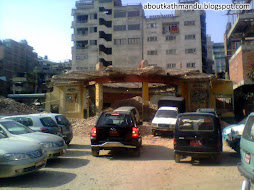





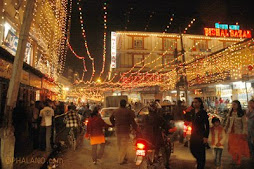













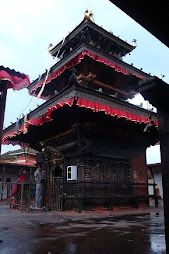






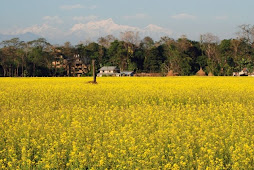



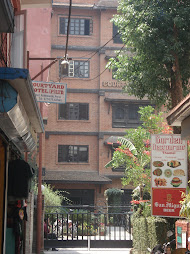










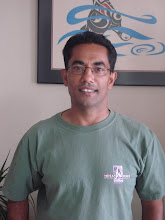

No comments:
Post a Comment